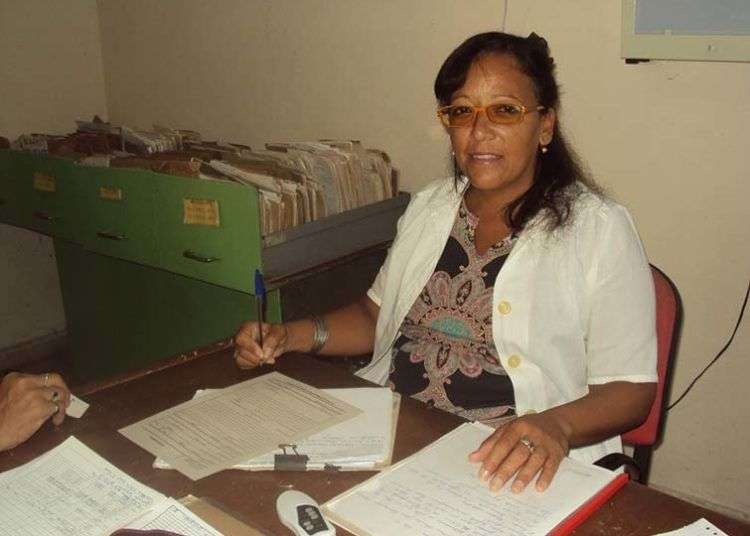Asthma was squeezing his lungs, but the doctor could not see his bluish face. Rather, the wan light of the match made him look rosy. The healthy image was only diluted by the constant and nervous panting of the patient.
In the white walls of the doctor´s office -then looked like an opaque cream – the undulating shadow of the nurse revealed a clumsy haste. It could not be different: how accurately mark the extent of the plunger into the night, lit only by a match and almost touching the patient breathing hectically just a couple of feet away?
That is how Doctor Miriam Alvarez Viltres remembers one of her first night shifts at the Carlos Manuel Portuondo polyclinic, in the Havana municipality of Marianao, back in 1991. Then she was a recent graduate doctor with a baby in her arms. In addition to the often all night ups, she should fulfill her daily duties as head of the medical office of “Tierna Infancia” Child Daycare Center also in this town.
Fate wanted Miriam to begin her working life in the same year the Special Period in Cuba began. The coolers full of ice cream, beef and condensed milk for the children soon became emulators of the Sahara. How much we had to “invent” !, sherecalls, “I do not know how we would have gone without the inventions of the cook …”.
Some days they would bring only 30 eggs for 300 children and all adult staff. What to do ?, how to distribute the absence ?, how to divide the need? So with lunchtime scratching the stomach of infants, the alternative to avoid starvation was born: pea broth thickened with scrambled eggs; “a single dish”, it was called.
But given the persistence of the “single dish” and smashed bananas, “Tierna Infancia” went to domestic inventive of parents to vary the menu. A sunny day in the courtyard of the school, a contest for all families bring their “culinary creations” was organized. Then, people brought the smug “microjet rice” –a variant of the cereal inflated by an exaggerated dose of water-the “melon soda” -made with cucumber and beetroot, the “ground banana peel” – a strongly main dish and for dessert, “carrot coconuts”.
Today, these things are remembered with jokes but at that time it was not to laugh, Dr. Miriam recalls. In 1993, she had her second child. Another mouth to feed. “I brought home many of the inventions of the Daycare center,” she says.
For practitioners them the great ordeal was to carry out the vaccination of children. None was left without the medication, but doctors at the district offices had to act even as “detectives”.
“We had to locate at least 10 parents to perform the procedure. We even had to call up to the workplace; mothers had to stop what they were doing to bring the child to the doctor´s office immediately. This was because the bulb of the PSR, which immunizes against mumps, measles and rubella-, takes ten doses, and we could not waste a single one. We could only open the bulb with the presence of all necessary patients. No more, no less. ”
Already 17 years ago Dr. Miriam Alvarez changed her practice the Daycare center by a family doctor´s house in the neighborhood of Pogolotti, but not yet forgotten the neuropathy crisis that erupted in the country when she was a recent graduate .
“Then, 30 polyvitamin pills were given per person to face the disease. But as they were not covered, the people crushed them to make yellow rice. In the end, they were not protected, because heat inactivated the medicine. ”
Now the dark nights in the Carlos Manuel Portuondo polyclinic seem distant, but the memory of the patient who came at midnight with asthma squeezing the lungs remains with vivid clarity. This time, a saving ambulance took him to a hospital with better conditions. At dawn, the Dr. Miriam took her two year old son, who stayed all night with her, to the daycare center next to “Tierna Infancia”.










